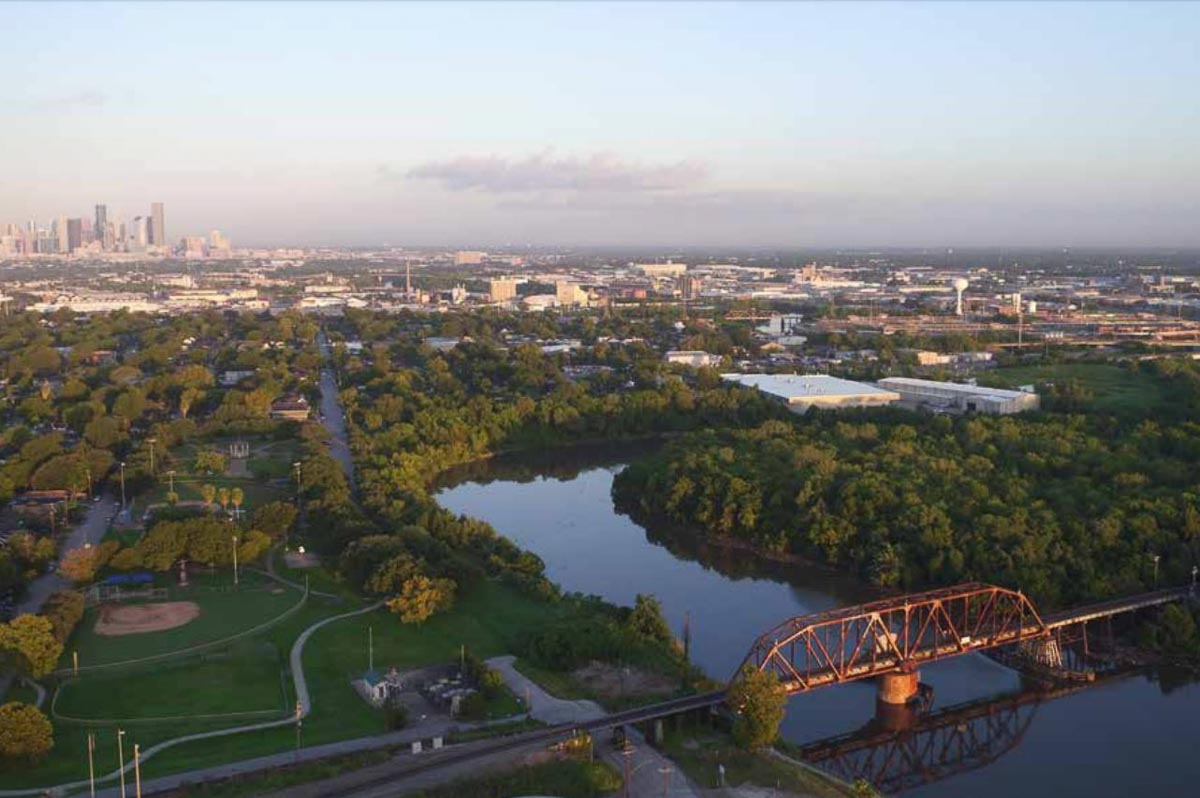Buffalo Bayou Partnership hosted a panel discussion on Monday covering the Buffalo Bayou East master plan and its focus on equity and resiliency. Bill Fulton, director of the Kinder Institute, served as moderator, and panelists included Anne-Marie Lubenau; Guy Hagstette, Vice President of Parks & Civic Projects at the Kinder Foundation; Cary Hirschstein, Partner at HR&A; and Scott McCready, Principal of SWA Group.
"We realize that we have a responsibility as the designers and as the implementers of parks and open spaces to think about the impact these places have," Hirschstein said. "They're an incredible catalyst, but with that comes a great responsibility to deal with the sorts of issues that the protesters raised here tonight." He was referring to three protesters that had gathered prior to the start of the discussion, challenging that the park improvements will gentrify neighborhoods, spur increased property values, put people out of their homes and increase poverty.
Hirschstein continued to say that the board and partners of the project ensured that equity was in the front and center of the master plan.
"Now more than ever, equity is really at the forefront of every conversation," Hirschstein said. "Whether it's thinking about the next business you're trying to attract to your city, whether it's talking about mass transit or whether it's parks and public space."
Anne Olson, the president of the Buffalo Bayou Partnership, has been participating in the Highline Network, which was created by New York City's Highline partners to ensure future public space projects keep gentrification in mind throughout the planning process.
Lockwood South, a mixed-income, economically inclusive neighborhood, is a part of the partnership's response to the equity challenges a new, beautiful park like Buffalo Bayou East would bring.
"A new residential development along the south bank of Buffalo Bayou near Lockwood Drive becomes an inclusive, mixed-income neighborhood," the master plan says. "New single and multi-family dwellings, including workforce housing, generates activity and density to build a critical mass of regular park users. The neighborhood plan thoroughly integrates housing with surrounding green spaces and adjacent housing to stitch historically disconnected communities to the waterfront."
This neighborhood proposal does aim to be economically-inclusive, but neither the plan nor the panel labeled the neighborhood as "affordable housing."
"We recognize that these communities, in the greater East End and Fifth Ward, have been under-invested," Hirschstein said. "There's been a tremendous amount of investment in really great open spaces in the city, but it tends to be skewed toward affluent neighborhoods. What we have today is a real opportunity to flip that 180 and provide these communities with really great public spaces and to reclaim the waterfront, which has been disconnected from the community for generations."
During the event Monday evening, the Bruner Foundation awarded the 2019 Rudy Bruner Award Silver Medal to Buffalo Bayou Park and its partners. Equity and resiliency were a part of the reasoning behind its selection.
"Water is a challenge here, and this project addresses it in a bold way, but also in a way that while it's unique and distinctive to Buffalo Bayou being the life where Houston started, it also incorporates a number of design moves that can be adapted to other cities," Lubenau said. "Additionally, we don't think of Houston as a planning city, but this plan really begins to shift the paradigm of Houston."
"When we're talking about resiliency," Hirschstein said. "We're not just talking about climate change, we're talking about economic and social resilience. We really tried to expand that conversation in thinking about Buffalo Bayou East and in sustaining those communities that exist."
To dive deeper into the Buffalo Bayou East master plan, check out our highlights here and review the full document here.

